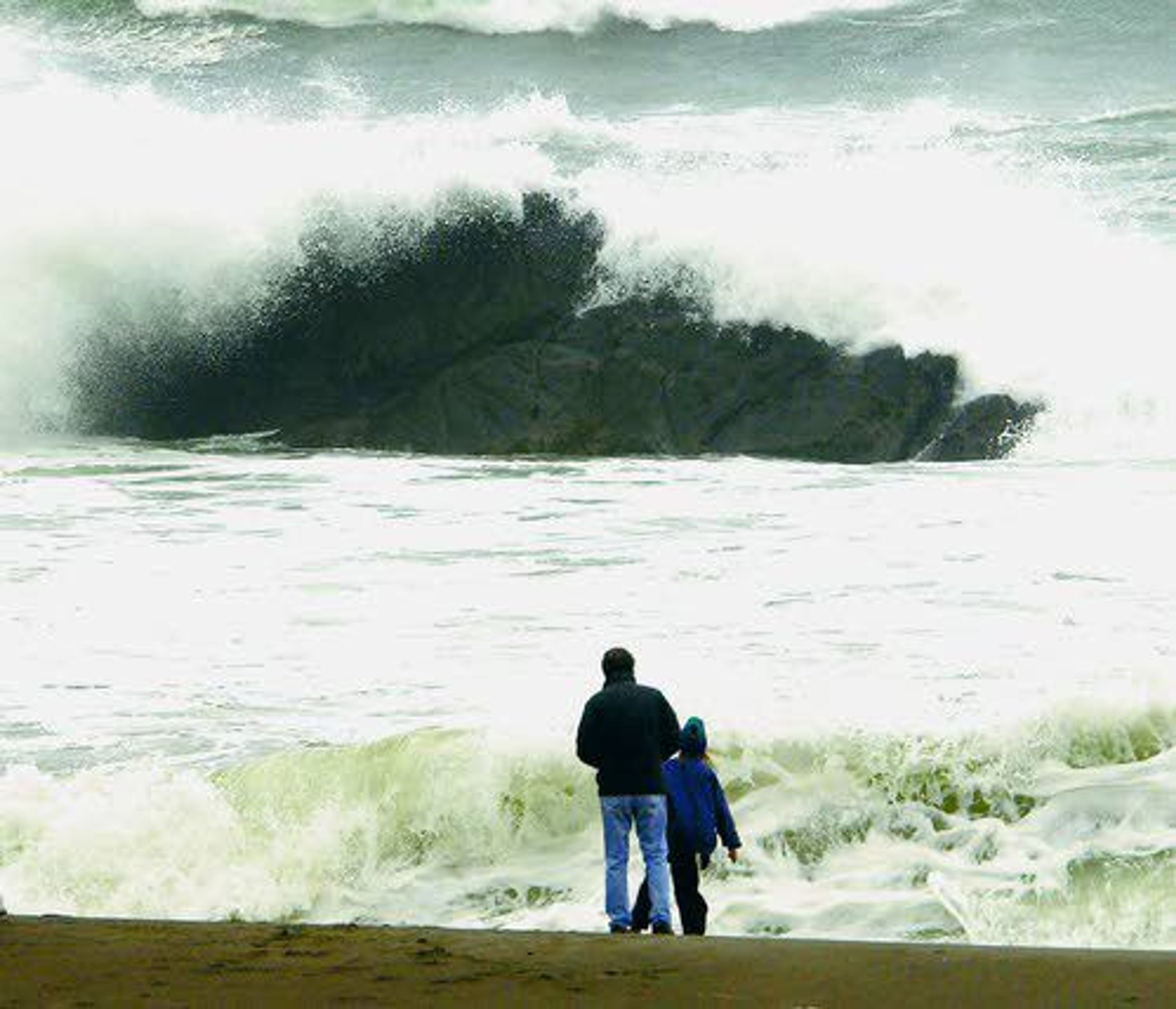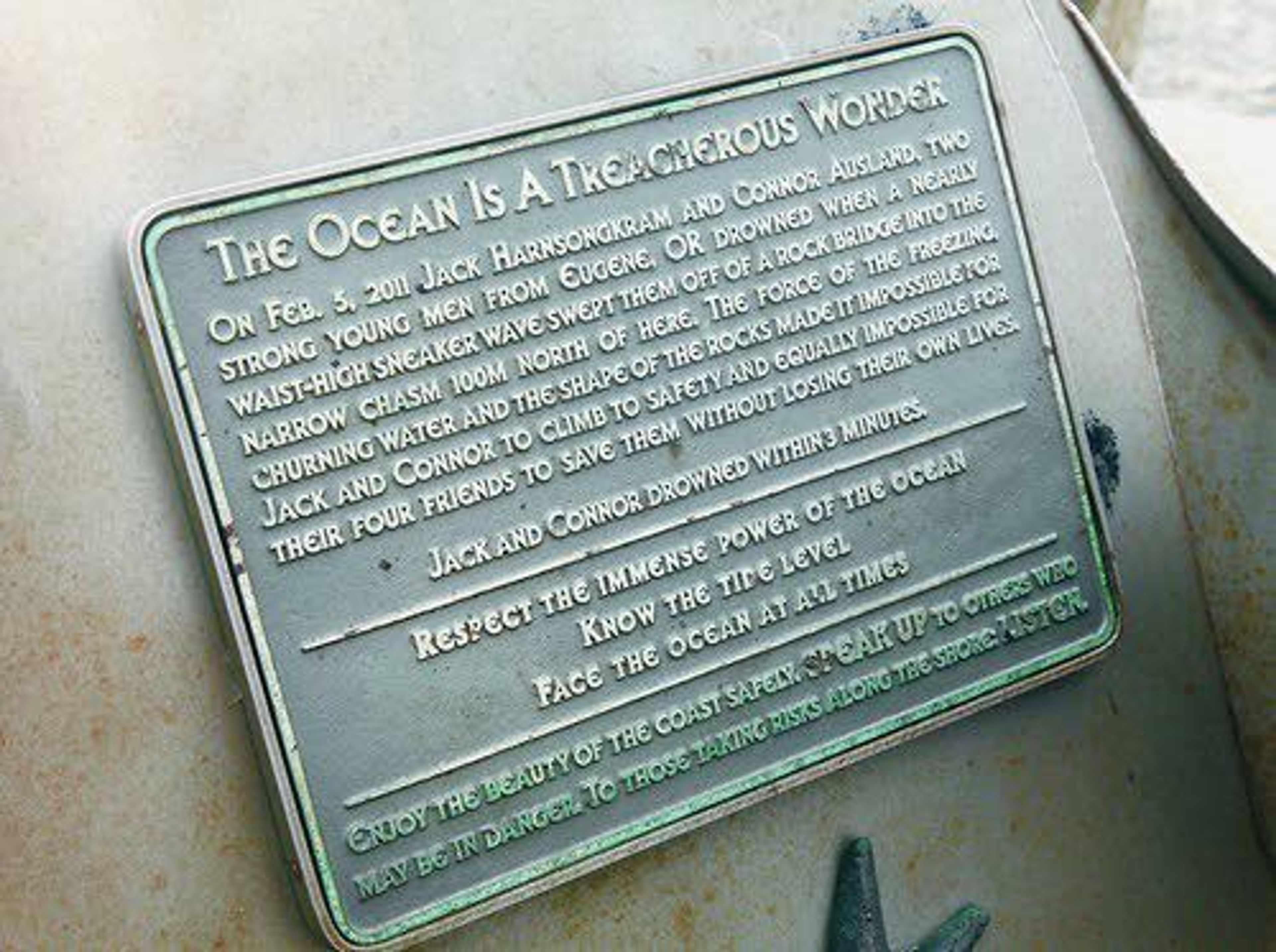Sneaker wave season arrives in Oregon
At least 21 have died during seasonal beach events since 1990
PORTLAND, Ore. - Never turn your back to the ocean.
That's probably the best piece of advice when it comes to surviving sneaker waves - the sudden, unpredictable surges of water that can knock you over or pull you out to sea. And while there's no official season for sneaker waves, plotting out major incidents in Oregon shows an undeniable seasonal trend.
Since 1990, all major sneaker wave incidents have occurred between October and April, peaking in November and March. In that time, at least 21 people have been killed by sneaker waves on the Oregon coast, and several others have been severely injured.
Victoria Hansen, a rescuer with the U.S. Coast Guard, told The Oregonian/OregonLive the seasonal occurrence could be the result of a more turbulent ocean. Winter storms toss the ocean about more violently, and the runoff from the land only adds to the volume. Tides also tend to be more extreme in the colder seasons, she said, drawing people to the beach when the water is low but pushing them back further come high tide.
"These waves become dangerous when beachgoers are in or near the waterline, and expect that the gentle spilling waves they have been experiencing will continue," Hansen explained. "The sneaker wave will quickly travel further up the beach than expected, and may sweep people off their feet and pull them back into the surf."
Researchers aren't sure why or how sneaker waves form, but it's generally thought that they develop when many waves traveling at the same speed come together, overlapping and combining to create a wave that crests taller and travels much farther ashore than normal.
The waves can sweep up people close to the water's edge in an instant, and can carry large debris - like the massive logs that line the coast - over top of beachgoers. A viral video shot in Charleston this past January shows the terror and suddenness with which a sneaker wave can arrive.
Hansen said the best way to stay safe is to be aware if you go near the water, and to stay within arm's length of small children if they're playing in the surf. If you do get swept up, don't try to fight the current - conserve energy and focus on keeping your head above water until rescuers arrive.
Bystanders should never enter the ocean to save somebody, she added, but should instead call 911 and keep visual contact with any victims.
Warning signs are posted at Oregon beaches, but victims' families have complained that they're not enough. After a wave killed two Eugene teenagers in February 2011, the community erected a memorial statue at Smelt Sands State Park that offered a personal story and a blunt message: "The Ocean is a treacherous wonder."
"Nobody predicts the ocean," Chris Havel, Oregon State Parks spokesman, said after the deaths in 2011. "The only thing you can predict is 362 miles of ocean shore that is a wild area. You struggle with the idea that you want to keep the ocean shore the kind of place people want to visit, not over fenced, not over signed. Then something tragic happens and you question everything you've done before that."










